Selected Historical Studies in African-American Christianity (15 vols.)
Digital Logos Edition
This product has been transferred from Community Pricing to Pre-Pub. The actual funding level may be lower than it appears, which could delay production. The amount of funding still needed will be evaluated and updated soon.
Overview
What challenges did African-Americans face as they established their spiritual roots during the late nineteenth-century in America? This collection provides 15 volumes that explore the plight and Christian spiritual journey of African-Americans from the antebellum period to the early twentieth-century. Readers interested in A.M.E. Church history, Episcopal church history, and African-American history will find this collection an invaluable resource.
Interested in a recent African-American pioneer? Check out Fortress Martin Luther King Jr. Collection (5 vols.).
- Contains 15 volumes that document the African-American experience of faith in the United States
- Addresses the challenges African-Americans faced as they established their spiritual roots
- Provides a snapshot of the history of African-Americans, the A.M.E. Church, and the Episcopal church
- Title: Historical Studies in African American Christianity
- Volumes: 15
- Pages: 4,400
- Resource Type: Sermons, Histories, Biographies
- Topic: Church in North America
- Sketches of the Life and Character of the Rev. Lemuel Haynes by Timothy Mather Cooley
- Sermons Delivered by Bishop Daniel A. Payne by Charles Spencer Smith
- A Treatise on Domestic Education by Daniel A. Payne
- Recollections of Seventy Years, A Memoir by Daniel A. Payne
- The History of the African Methodist Church, vol. 1 by Charles Spencer Smith
- The History of the African Methodist Church, vol. 2 by Charles Spencer Smith
- The Life, Experience, and Gospel Labors of the Rt. Rev. Richard Allen by Richard Allen
- Centennial Encyclopaedia of the African Methodist Episcopal Church edited by Richard R. Wright
- Life of Charles B.W. Gordon by William Henry Sherwood
- Select Sermons by Charles B. W. Gordon
- A Vindication of the Capacity of the Negro Race for Self-Government, and Civilized Progress, as Demonstrated by Historical Events of the Haytian Revolution by James Theodore Holly
- Afro-American Church Work and Workers by George F. Bragg
- History of the Afro-American Group in the Episcopal Church by George F. Bragg
- The Book of American Negro Spirituals edited by James Weldon Johnson
- Folk Beliefs of the Southern Negro by Newbell Niles Puckett
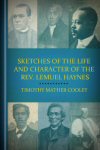
This biography tells the story of Lemuel Haynes’ experiences as an indentured servant, minuteman, and pastor. The author consulted with Haynes’ friends and congregation to gather background information and personal stories. This volume also includes some of Haynes’ sermons and letters, including the first sermon he wrote and several notes on biblical passages.
Timothy Mather Cooley graduated from Yale University in 1792, and was ordained pastor of a church in East Granville, Connecticut. After his retirement, he opened a classical school in his house. He has written several books, including memoirs for each member of the Yale class of 1792.
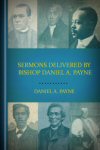
This volume contains two sermons preached by bishop Payne at the General Conference of the A.M.E. Church. The first sermon is based on Malachi 2:4–7, and addressed whether the priesthood of Judaism was identical in character and design to the ministry of the Christian Church. The Ordination Sermon was delivered on the occasion of the ordination of W.J. Gaines, B.W. Arnett, B.T. Tanner, and Abram Grant to the bishopric.
Charles Spencer Smith was a teacher in Kentucky and was later licensed to preach in the A.M.E. Church at Jackson, Mississippi. He then moved to Nashville and attended Central Tennessee College where he received a full medical degree in 1880, and also received a Doctor of Divinity degree from Victoria College in 1911. He founded a publishing house, the Sunday School Union of the A.M.E. Church, the only steam printing publisher in America to be owned and managed by an African-American.

After years of teaching, Daniel Payne collected his thoughts about Christian education in A Treatise on Domestic Education. He argues that education starts in the home, and that a child’s family molds their moral integrity.
Daniel Alexander Payne was an American bishop, educator, college administrator, and author. He was a major influence in the A.M.E. Church. In 1856, he was one of the founders of Wilberforce University in Ohio. In 1863, the A.M.E. Church bought the college and chose Payne to lead it, where he became the first African-American president of a college in the United States. He served in that position until 1877. In 1891, Payne wrote the first history of the A.M.E. Church, a few years after publishing his memoir.
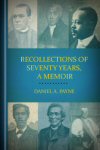
Daniel Payne’s autobiography offers a lively account of his experiences from his childhood as an orphan in South Carolina to his maturity as an influential leader in the A.M.E. Church. Payne emphasizes the religious aspects of his life, but touches on other important issues including education, racial prejudice, music, and literature. Also notable are Payne’s descriptions of his trips to Europe as a representative to the Ecumenical Council.
Daniel Alexander Payne was an American bishop, educator, college administrator, and author. He was a major influence in the A.M.E. Church. In 1856, he was one of the founders of Wilberforce University in Ohio. In 1863, the A.M.E. Church bought the college and chose Payne to lead it, where he became the first African-American president of a college in the United States. He served in that position until 1877. In 1891, Payne wrote the first history of the A.M.E. Church, a few years after publishing his memoir.
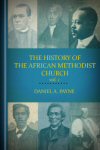
Charles Smith drew from manuscripts, church records, journals, and letters to compile this history of the A.M.E. Church. He divided the church’s history into five general periods: the Sowing Period (1787–1816), Formative Period (1816–1840), Progressive Period (1840–1863), Expanding Period (1863–1880), and the Developing Period (1880–1922).
Charles Spencer Smith was a teacher in Kentucky and was later licensed to preach in the A.M.E. Church at Jackson, Mississippi. He then moved to Nashville and attended Central Tennessee College where he received a full medical degree in 1880, and also received a Doctor of Divinity degree from Victoria College in 1911. He founded a publishing house, the Sunday School Union of the A.M.E. Church, the only steam printing publisher in America to be owned and managed by an African-American.
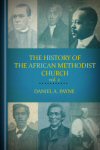
The History of the African Methodist Church, vol. 2
- Author: Charles Spencer Smith
- Publisher: A.M.E. Sunday School Union
- Publication Date: 1922
- Pages: 570
Charles Smith drew from manuscripts, church records, journals, and letters to compile this history of the A.M.E. Church. He divided the church’s history into five general periods: the Sowing Period (1787–1816), Formative Period (1816–1840), Progressive Period (1840–1863), Expanding Period (1863–1880), and the Developing Period (1880–1922).
Charles Spencer Smith was a teacher in Kentucky and was later licensed to preach in the A.M.E. Church at Jackson, Mississippi. He then moved to Nashville and attended Central Tennessee College where he received a full medical degree in 1880, and also received a Doctor of Divinity degree from Victoria College in 1911. He founded a publishing house, the Sunday School Union of the A.M.E. Church, the only steam printing publisher in America to be owned and managed by an African-American.
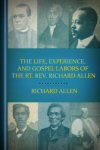
In this autobiography, Richard Allen shares his early years as a Methodist preacher and sheds light on his involvement in the formation of Bethel Church in Philadelphia and the A.M.E. Church. He concludes this volume with religious treatises on slavery, prayers, and an account of the 1793 yellow fever outbreak in Philadelphia.
Richard Allen (1760–1831) was a minister, educator, writer, and one of America’s most active and influential black leaders. He became one of the founders of the A.M.E. Church in 1816 and was elected as the first bishop. Allen focused on organizing a denomination where African-Americans could worship without racial oppression. He worked to upgrade the social status of the black community, organized sabbath schools to teach literacy, and promoted national organizations to develop political strategies.
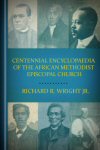
This volume is a collection of articles and biographical sketches of important figures in the A.M.E. Church in honor of its 100 year anniversary. The book begins with a series of articles about the church’s history, present status, and includes a comprehensive chronology of African Methodism. The second section of the encyclopedia contains hundreds of biographical and autobiographical entries. The third portion of the book is a glossary of terms pertaining to church organization, doctrine, laws, and history. The work ends with detailed entries on the church’s regional conferences and divisions, and financial and membership statistics.
Richard R. Wright was a bishop in the A.M.E. Church. He served as editor of the Christian Recorder, business manager of the A.M.E. Book Concern, and president of Wilberforce University. He is well known for his literary works in A.M.E. Church history and American sociology. He founded the National Freedom Day Association.
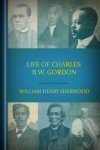
Charles B.W. Gordon was the pastor of the First Baptist Church in Petersburg, Virginia. The first part of this volume chronicles Gordon’s life and influence on the church. The second part describes the history of the church from 1774 to 1855, including the church’s constitution and articles of faith.
William Henry Sherwood has written books including Talent of the Negro Race, Poetic Gleanings, and Founder of People’s Voice.
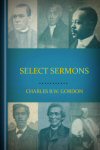
This volume contains 56 sermons by Charles B.W. Gordon, including: “The Coming Savior” based on Genesis 49:10, “Greatness Merited by Services” based on Matthew 20:26, “The True Teacher” based on John 3:2, and “For or Against” based on Matthew 12:30.
Charles B.W. Gordon was a successful school teacher, and later became the principal of the public schools in Windsor, North Carolina. While at Richmond Theological Seminary, he became the pastor of First Baptist Church in Petersburg, Virginia.
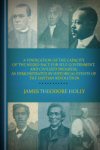
James Holly prepared and delivered this lecture after his return from Haiti in the autumn of 1855. He examines the events of Haitian history to illustrate his argument for equality in America, and to encourage African-Americans to support the advancement of the Haitian people.
James Theodore Holly (1829–1911) was the first African-American bishop in the Protestant Episcopal Church, and spent most of his career as missionary bishop in Haiti.
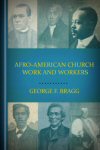
George Bragg provides a review of the church’s work for the past 17 years. He lists African-American clergy that were serving at the time, as well as notable figures in the church’s history.
George F. Bragg (1863–1940) was a priest, social activist, and journalist. In 1882, he founded The Petersburg Lancet, a weekly newspaper for African-Americans (later renamed the Afro-American Churchman). Bragg was ordained as a deacon and later as a priest at Saint Luke’s Episcopal Church in Norfolk, making him only the twelfth black Episcopal priest in the United States. Both within and beyond the church, he was a leader working to advance education for African-Americans. Bragg was a critic of racism in the church, and was opposed to the exclusion of African-Americans in the missionary organization of the church.
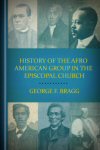
George Bragg offers up a richly detailed history of African-American involvement in the Episcopal Church. His story begins with Goose Creek parish in 1695 South Carolina, and covers early communities in Maryland, Virginia, and Georgia. He reports on the origin of the Free African Society as well as the ecumenical church workers in the North. Bragg gives details on nine separate churches, drawing on church records and reports, and excerpts of letters. He also includes lists of clergy, drawing attention to individuals who were important to the development of the church.
George F. Bragg (1863–1940) was a priest, social activist, and journalist. In 1882, he founded The Petersburg Lancet, a weekly newspaper for African-Americans (later renamed the Afro-American Churchman). Bragg was ordained as a deacon and later as a priest at Saint Luke’s Episcopal Church in Norfolk, making him only the twelfth black Episcopal priest in the United States. Both within and beyond the church, he was a leader working to advance education for African-Americans. Bragg was a critic of racism in the church, and was opposed to the exclusion of African-Americans in the missionary organization of the church.
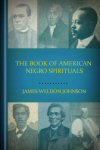
The Book of American Negro Spirituals
- Editor: James Weldon Johnson
- Publisher: The Viking Press
- Publication Date: 1925
- Pages: 187
This stirring collection presents religious folk songs in their original forms, handed down from generation to generation in a rich oral African tradition. James Johnson wrote the preface, providing insight to the origins, musical quality, and historical significance of the songs. Above all, he stresses the essential dignity of these spirituals, which are the purely and solely the creation of African-Americans. Songs include “Swing Low Sweet Chariot”, “Deep River”, “Nobody Knows De Trouble I See”, “My Lord, What a Mornin’”, and “Go Down Moses”.
James Weldon Johnson was an American author, educator, lawyer, diplomat, songwriter, and civil rights activist. He is best remembered for his leadership of the National Association for the Advancement of Colored People (NAACP), where he started working in 1917. In 1934, Johnson became the first African-American professor to be hired at New York University. Johnson was known during the Harlem Renaissance for his poems, novels, and anthologies collecting both poems and spirituals of black culture.
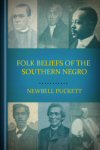
This volume was originally a dissertation that Newbell Puckett presented for his PhD at Yale University. It is a study of the acculturation of African-American folklore in the South. Puckett shows their origins whenever possible, and indicates some of the principles governing the transmission and content of folklore in general. His personal work showed him the necessity of haste in collecting this fast-disappearing lore. He supplemented his field work with questionnaires sent out to all colored colleges of the South in which 10,000 beliefs were gathered from every state, mostly from Mississippi, Alabama, and Georgia. Two-thirds were duplications, leaving 3,500 or so retained.
Newbell Niles Puckett was educator, sociologist, and folklorist. In 1922, he joined the sociology faculty of Western Reserve University, where he later taught a pioneering course in black studies. He was chairman of the Sociology Department from 1954–1962.
Reviews
4 ratings
Patrick L. Frazier, Jr.
8/7/2023
This seems to be primarily a history of the AME Church. While you included a few Baptists, you missed the major streams. Noticeably absent were the Holiness-Pentecostal traditions as well. The role of Charles H. Mason and COGIC and the spread of Pentecostalism throughout the world. There is also the role of William Edward Fuller, Sr. in the transition of the Fire Baptized Holiness Association into the Fire Baptized Holiness Church in 1898, which split along racial lines in 1908. The African-American branch was called The Colored Fire Baptized Holiness Church. There are also other branches such as The Pentecostal Assemblies of the World and Progressive Church of our Lord Jesus Christ. Some may say that Father Divine and Daddy Grace were on the fringe , but their movements played a role in the socio-religious fabric of the Africam-American community. Thanks for what you have provided.Octavia Stanton Caldwell
7/27/2022
Rev. Dr. Esau McCaulley's, "Reading While Black; African American Biblical Interpretation As An Exercise in Hope" is an effective blend of biblical hermeneutics, black church history, and insightful exegesis of select New Testament texts. While not denomination specific, he includes those common aspects of Black Christian History in America and the African presence in the Bible. An excellent scholarly work, worthy of attention.
Faithlife User
5/14/2022
You can't speak on African American church history without including all of the history. The CME church Baptist Church the COGIC and many others.
Faithlife User
10/5/2021
I have always believed that there was NO such a thing as Black or White in the Brotherhood of believers, than a distinction is made, why?
S1atch1
9/15/2021
Failure to include the historical Christian development in the National Baptist Convention is puzzling. Even the Southern Baptist Convention strongly emphasizes Black leadership, also electing a black president recently. The absence of Bishop James Mason and his contributions to the Church of God in Christ is insensitive. Inconclusive and separatist ideas are gleaned from the information.J. Allen Kimbrough
8/17/2021
The spiritual wealth of information compiled by African - Americans for quick access is a foundation to build upward. Could you make it happen?

Eric Jewell Hayes Sr
12/9/2018
I appreciate the effort by Logos to chronicle the faith history of Blacks in America but you should have simply labeled it 'AME History in America' or something like that. Not to include Baptists is simply not approaching anything exhaustive and with most Blacks being Baptist the interest is reduced.